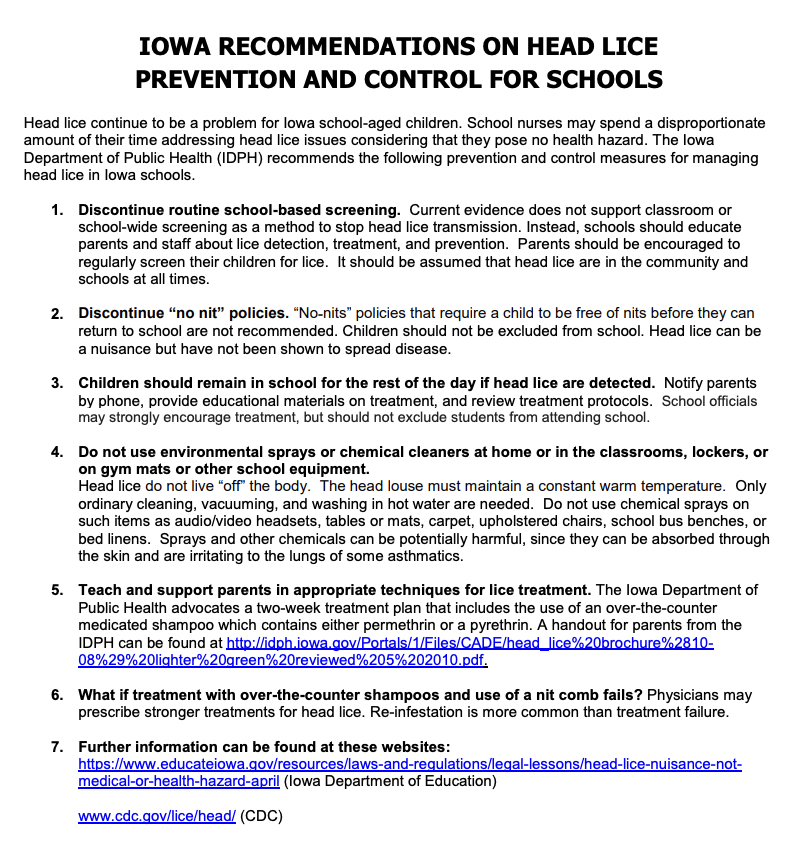Head Lice Information
Parents should assume that lice are present in the school all year. Parents will be asked to monitor their children regularly and keep the school informed on the progress of treatment.
If head lice are found on a child while at school, the parent will be notified and requested that the child be treated before returning to school. During the course of treatment, children may be monitored but will be allowed to stay in school. Exclusion from school can stigmatize a child and interfere with education. However, non-treatment may result in exclusion from school until treatment has begun.
► CDC- Providing Care for Individuals with Head Lice
► Head Lice Information and Treatment Options



